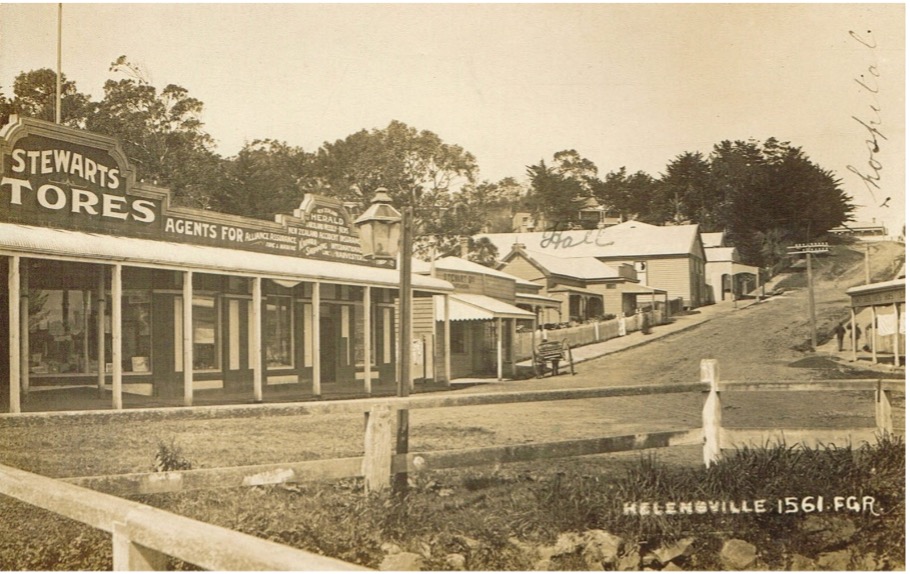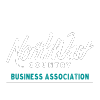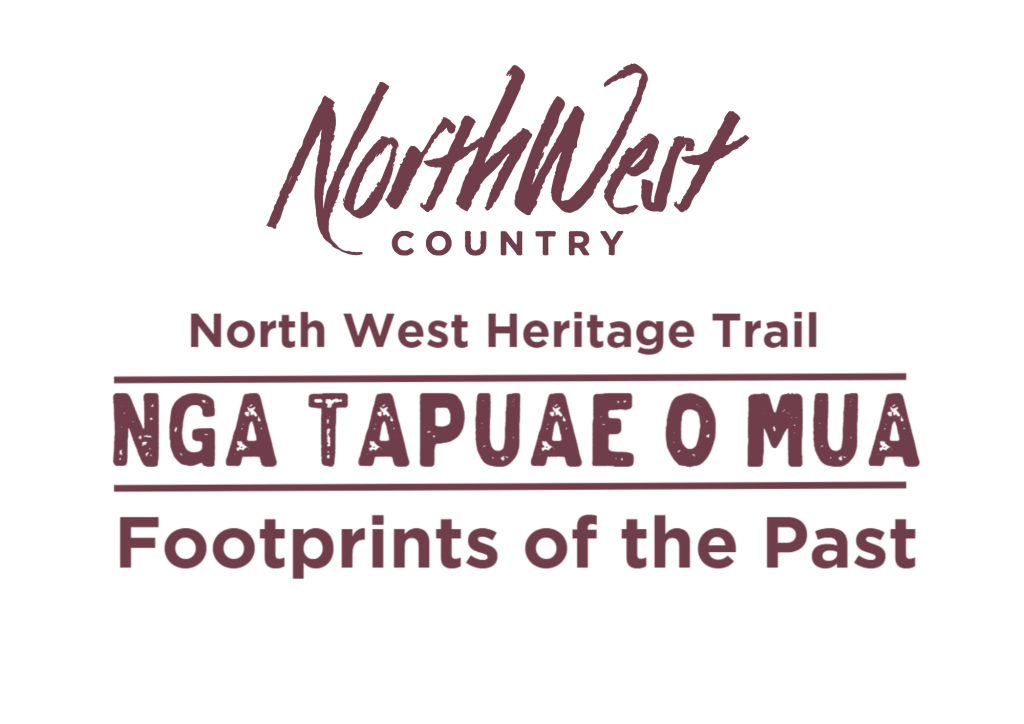
KO TE TAUHOKOHOKO
Tauhokohoko ai ngā tāngata Māori ki ngā mea i hiahiatia e rātou, engari, kāore he moni, kāore he pēke, arā, kāore he pūkainga. I penapenahia kai e rātou mō te tūpono i ka tae te tau nihoroa. Nā te taiao i tiaki i a rātou, ā, nā rātou i tiaki i te taiao. I rerekē te kaupapa o te taonga i te taenga mai o te Pākeha, ā, i whakarerekē te taiao mō ake tonu atu.
COMMERCE
Māori didn’t have commerce as we know it today. They traded goods as they needed rather than stockpiling There was no money and therefore there were no banks. Food was stored for leaner times, but generally nature took care of them, and they took care of nature. The concept of wealth changed forever with the arrival of the European and the natural world changed with it. Now you could own nature rather than be a part of it. Anything saleable became fair game. Natural resources quickly became endangered.
TAUHOKOHOKO
COMMERCE
Ngāti Whātua were quick to adapt to the new economy brought to the region by Europeans. During the 1840s, Māori were involved in the shipping industry and owned several coastal trading vessels. They also helped to provision newly arrived settlers and transport them over rugged terrain.
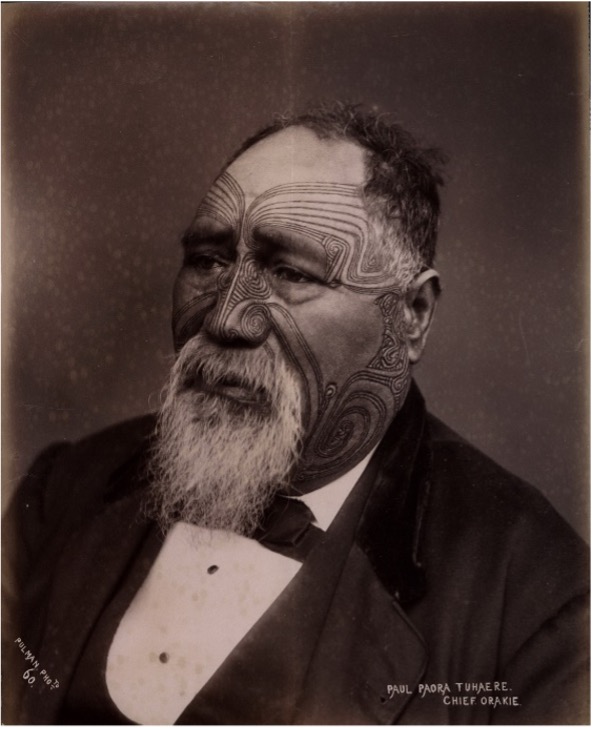
Paora Tuhaere
Paora Tuhaere, a Te Taoū Chief, explained “I purchased a Schooner called the “Victoria” with the money I got for Te Ararimu (a land block), the vessel belonged to me and Tamati Rewiti.” The Victoria was a 17-ton schooner built in Auckland in the 1850s and was used to trade firewood and food throughout Northland and Coromandel. The vessel also made several trips to Rarotonga returning with tropical fruit for sale in Auckland. She was later wrecked at the entrance to the Awanui River in September 1872 without loss of life.
In the 1840’s a fish canning factory was run as a co-operative employing 20 men. By 1914 it was estimated that a quarter of the Te Awaroa/Helensville population was involved in the fishing industry.
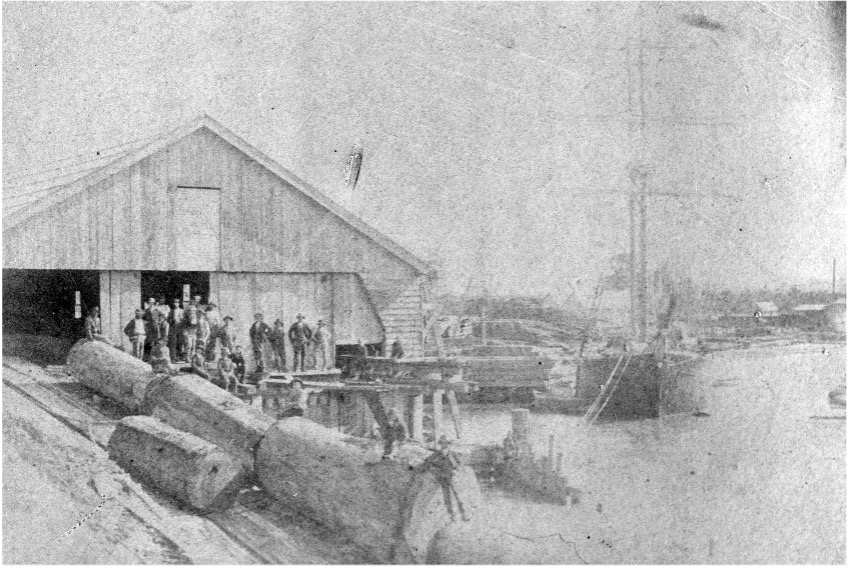
 Helensville Timber Co mill – courtesy of Helensville Museum
Helensville Timber Co mill – courtesy of Helensville Museum
Around 1880 the Helensville Timber Company built a large mill on the Kaipara River at Helensville. Some of the 50 employees are pictured here on the log-slip. Logs were towed along the river and then pulled up the slip to be sawn. Some of the timber was taken by rail to Auckland, but most was shipped to Australia. In 1886 the company was taken over by the Kauri Timber Company, who closed the Helensville mill in 1890.
The McLeods opened their timber mill in 1862, using tools and machinery that was shipped from Auckland, via North Cape to the Kaipara. This mill only operated for a few years before closure, although other mills opened later, the last of these being West’s Mill which closed in the 1970’s.
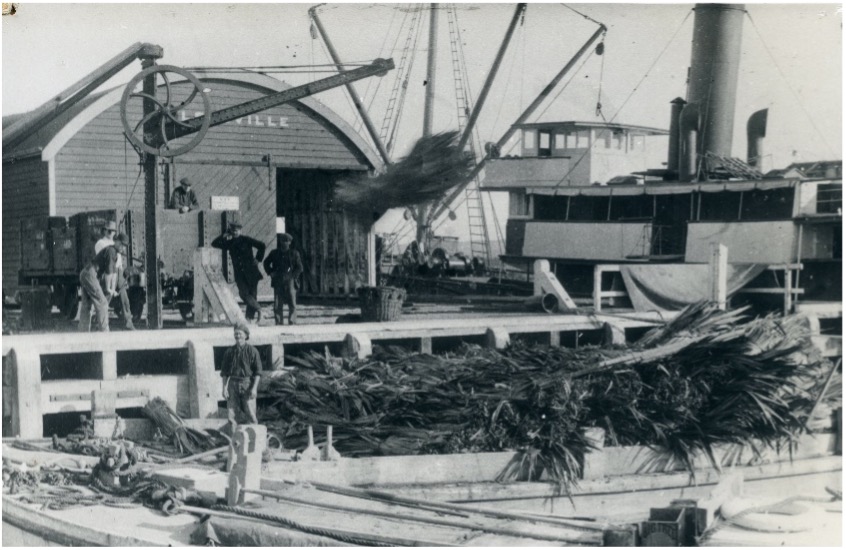
 Flax cut on Parkhurst Flats being unloaded at Helensville – courtesy of Helensville Museum
Flax cut on Parkhurst Flats being unloaded at Helensville – courtesy of Helensville Museum
Ngāti Whātua welcomed the McLeods to the area, supporting them in their basic needs, and providing staff for their milling business. Another early commercial activity of the Māori was flax growing. A flax mill was in operation at Parakai in 1884 and another at Te Awaroa (Helensville)
Many of the early settlers were assigned a 40-acre (16 hectare) block by the Government. Some purchased their own land. Hard work was required to bring the land into grassed paddocks suitable for livestock, and many landowners had other jobs to bring in wages. The 1890s saw a new era of prosperity based on dairy farming that lasted through to the 1920s due to several new developments – refrigeration, the use of artificial fertilizers, improved transportation, and cheap loans for farmers.
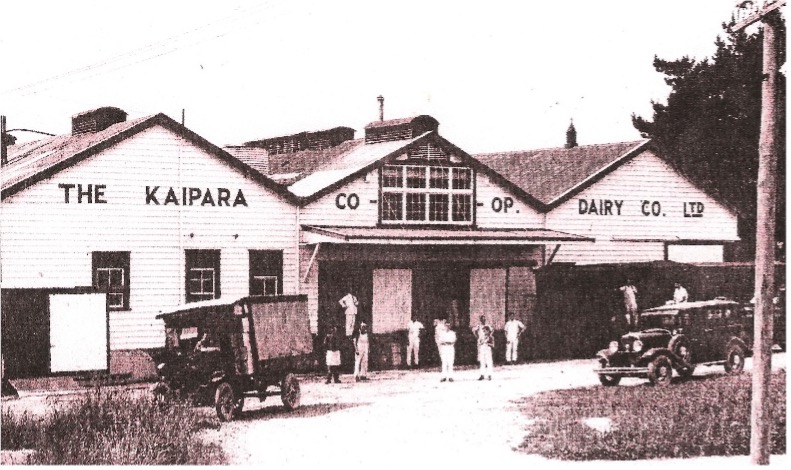
Kaipara Dairy Co-Op Dairy Company Ltd – courtesy of Helensville Museum
The Kaipara Dairy Co-operative came about in 1911 when 11 farmers decided to form a company and elected a provisional manager, an organiser, and directors. The first factory was a simple shed and produced ‘Poplar’ butter from the herds of 70 suppliers who had previously sent milk and cream to Ambury and English’s creamery or to Stewart’s butter factory. Surviving the depression of the 1930s and the dairy factory workers’ strike in 1945, the KDC expanded in the late 1940s. By the 1960s approximately 100 people were employed in the industry in some capacity. The factory was closed in the 1980s due to a decline in farming at the time.
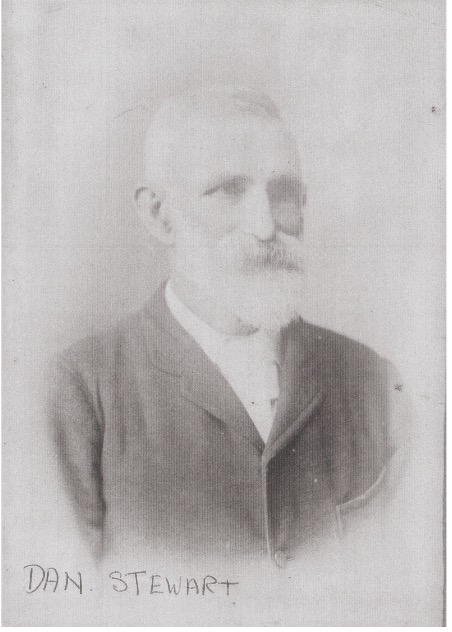
 Dan Stewart – courtesy of Helensville Museum
Dan Stewart – courtesy of Helensville Museum
Daniel Stewart, a Scotsman who married Jane Lamb of Pitoitoi (Riverhead), farmed the land, founded a family, and ran a comprehensive range of businesses throughout the Kaipara. Stewart’s enterprises bought items such as fish, gum, and milk and sold everything a settler might need in the way of imported goods from overseas. They were the main dealers in kauri gum in the area. Screaton’s was another store that flourished in Te Awaroa. They sold everything from plates to top hats, until they closed in the 1970s.
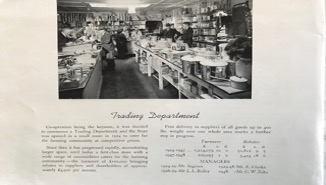
 From K.D.C. Dairying in the Kaipara District
From K.D.C. Dairying in the Kaipara District
Other enterprises which came and went were:
- Hunter’s Bakery
- Helensville Timber Company Mill, (later known as Helensville Kauri Timber Company Mill)
- Hjorth’s Soap Factory
- Flour Mill
- Spinley Coachbuilders
- Spinley’s Foundry
- Brickworks and Kiln
- Hand’s Butchery
- West’s Woodworking Factory
- Why Not Tearoom
- Milk Bar
- Sand/Glass factory
- Blacksmiths’ and Engineering Workshops
- Bailey’s Saddlery
- Cullen’s Bootmaker
- Laird’s Jewellers
- Coulter’s Tailor and Haberdasher
- Gasson’s Bootmaker
More Reading from Papers Past:
Flax Trade 3 February 1890 (See halfway down the column)

From The Observer 19 March 1881
People & Their Stories…
Stewart Brothers
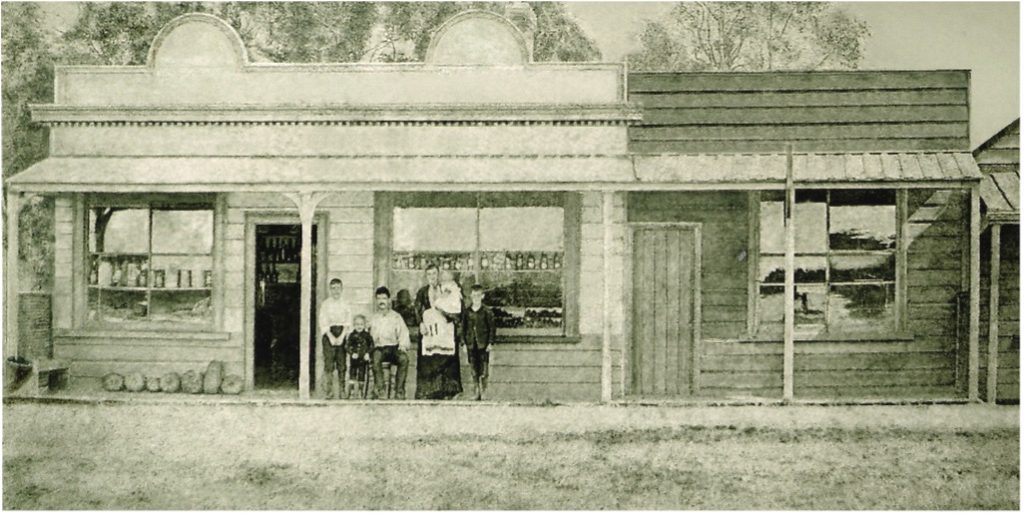
Stewart’s Stores – courtesy of Helensville Museum
The name Stewart was widely known in the early 1900s due to the tremendous business interests – the timber contracts, shipping, indenting and branch stores – all centred on the one-acre base of the Stewart Bros. store in Te Awaroa (Helensville). In the solid brick and concrete store with veranda, next to Hook’s Boarding House, the drapery, hardware, and grocery lines filled storage rooms, shelves, display stands and counters. English crockery for Stewarts’ store was bought in crate loads, sugar in never less than five ton lots and 500 large chests of Ceylon tea and five hogsheads of methylated spirits arrived in every delivery, by boat, from Sydney. For settlers in the district other bulk lines carried by Stewart Bros. included tons of corrugated iron and barbed wire, immense amounts of chaff, hay, bricks, coal, potatoes, seeds and onions, agricultural machinery, building materials and furniture.
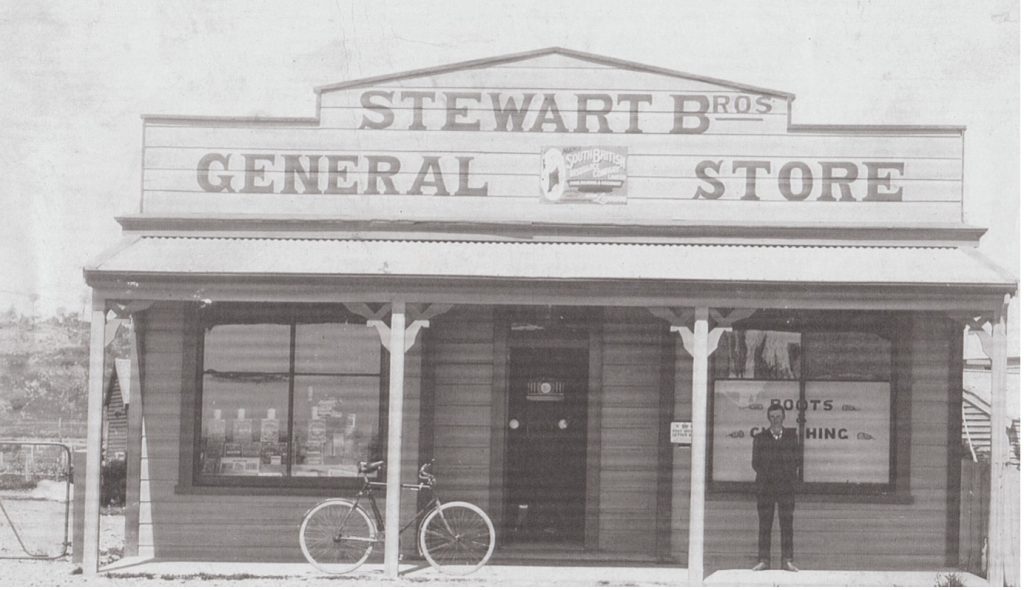
Stewart’s Stores – courtesy of Helensville Museum
In the left wing of the store, Stewart Bros., displayed and sold Ladies Mantles and Millinery, Gents’ Haberdashery and an extensive range of household linens and napery. The gowns and hats, brought direct from Sydney to Te Awaroa, were always the latest fashions. The button hooks, wrist bags, fans and hairpin boxes further tempted women customers.
A lot of extra trade was brought to the Stewart Bros. big store during week-long sittings of the Māori Land Court. Rugs, overcoats, suits, dresses, and footwear were all popular purchases with Māori customers from every settlement in Kaipara and Northern Wairoa. Over the years, many a Māori depended on Stewart Bros., or more particularly on “Timi Tuata”, Jimmy Stewart, for every need in this world and one step beyond. Ready-made coffins were part of Stewart’s’ stock-in-trade and could be supplied at short notice, with a free, white-enamelled nameplate.
Add to this, Stewart’s Butchery, goods shed, coal shed, bakery, confectionery and barbers, Stewart’s butter factory, timber firm, gum store, and other business interests, the importance of the Stewart dynasty to Te Awaroa was comprehensive.
